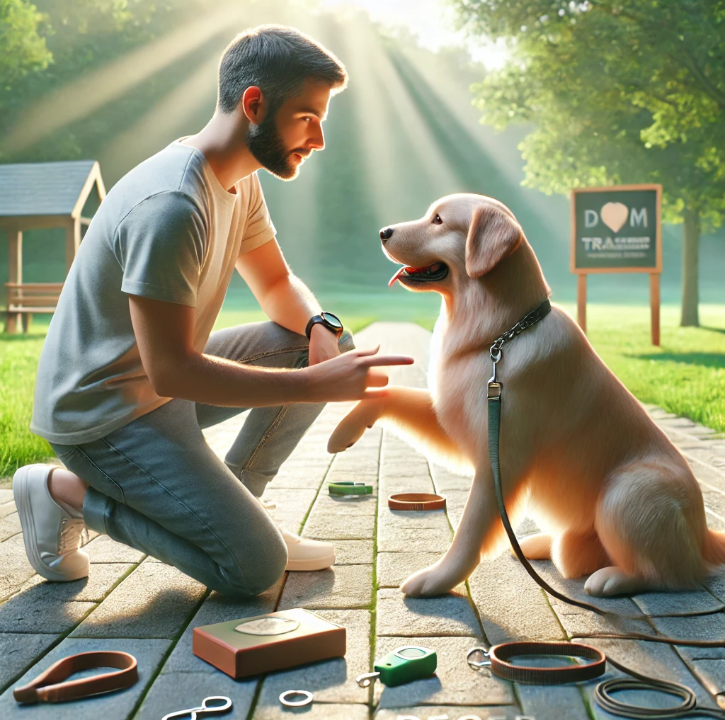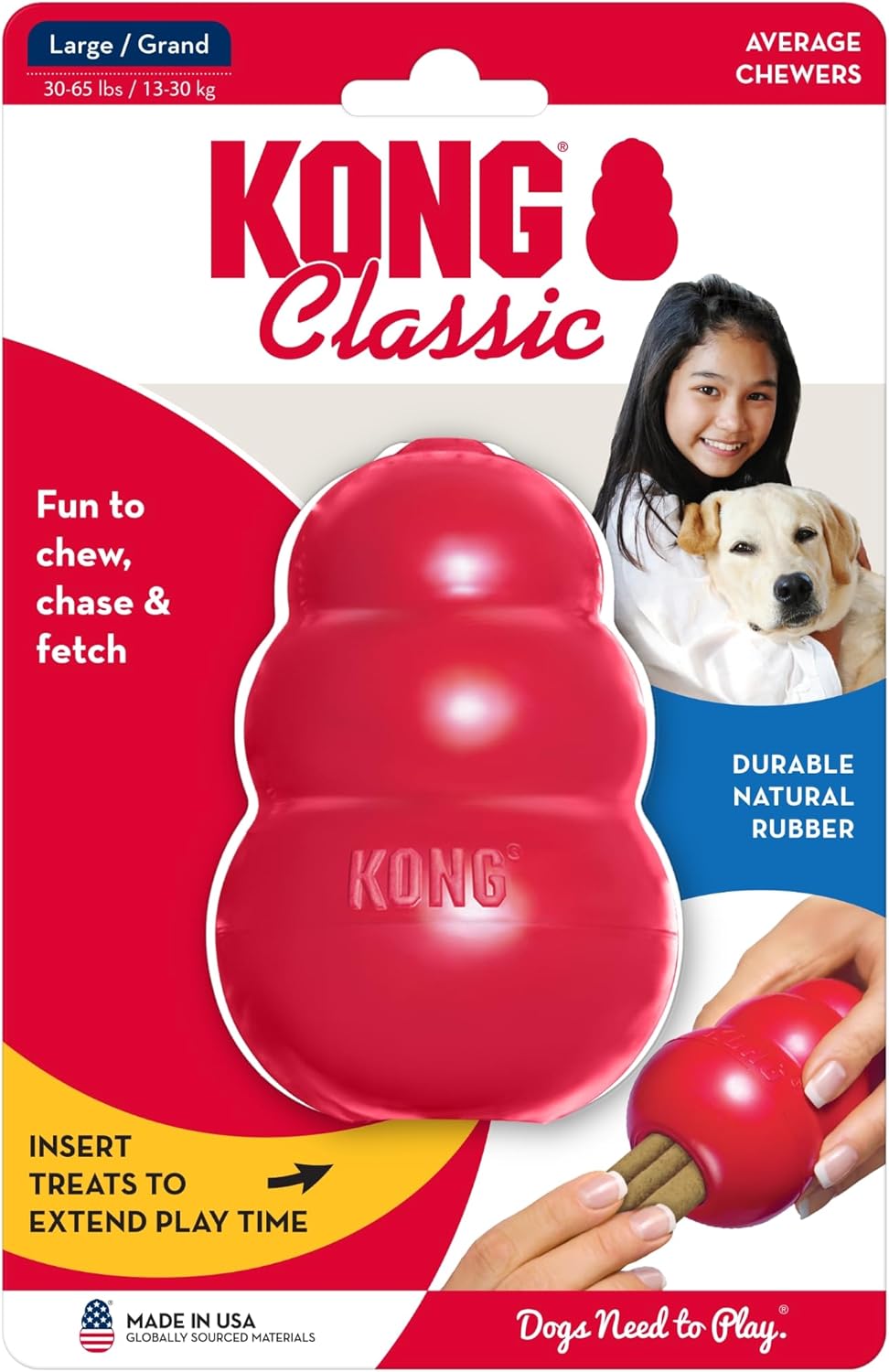 |
Important Takeaways for Recognizing Dominance vs. Aggression in Dogs:
|
| Understanding the difference between dominance and aggression in dogs is essential for effective training and fostering a harmonious relationship. Dominance focuses on social hierarchy and control, while aggression stems from reactions to perceived threats. Early socialization, mental stimulation, and tools like training collars or anxiety vests can help manage these behaviors. Recognizing their distinct motivations allows for tailored training approaches, promoting trust, respect, and safety between dogs and their owners. | |
What is Dominance in Dogs?
Dominance in dogs is a behavior used to establish social structure and hierarchy within a group, rather than an inherent personality trait or aggression. A dominant dog often tries to control access to things like food or toys and may show behaviors that help establish its place in the social hierarchy
Defining Dominance
Dominance reflects a dog’s tendency to position itself within a social hierarchy rather than an intent to intimidate or harm. Dominance in dogs, unlike aggression, is more about establishing control and stability than responding to perceived threats.
Signs of Dominance
A dominant dog may exhibit behaviors such as:
- Physical Positioning: Standing over people or other dogs or sitting on high ground, such as furniture, to feel in control.
- Resource Guarding (non-aggressive): Holding onto toys or space without hostility.
- Ignoring Commands: Selectively responding to commands based on whether it sees a benefit in obeying.
| Dominance Traits | Description |
| Standing Over Others | Positions itself physically above others |
| Resource Guarding (non-aggressive) | Holds onto items without signs of hostility |
| Ignoring Commands | Often disregards commands unless there’s a strong incentive |
Understanding Dominance vs. Social Structure
Dominance is often confused with “alpha” behavior, but it simply reflects a dog’s social positioning. Recognizing this can help dog owners set boundaries and structure without misinterpreting dominance as disobedience.
What is Aggression in Dogs?
Aggression in dogs is a defensive or offensive response to a perceived threat. Unlike dominance, which centers on social order, aggression is driven by emotions such as fear, anxiety, or territorial instincts and is often more intense and directed.
Defining Aggression
Aggression involves actions like growling, lunging, or biting, typically to protect oneself, territory, or resources. This behavior is reactive and intended to ward off perceived danger.
Signs of Aggression
Common signs of aggression include:
- Growling, Snarling, or Baring Teeth: Signals discomfort or a warning.
- Lunging or Biting: Escalated reaction to a perceived threat.
- Rigid Body Posture: Tense body language indicating readiness to act.
| Aggression Traits | Description |
| Growling or Snarling | Vocalizations indicating discomfort or a defensive stance |
| Lunging or Biting | Physical attacks in response to perceived threats |
| Rigid Posture | Tense body signaling readiness to act |
Types of Aggression
Aggression in dogs can manifest in various ways depending on the underlying cause:
- Fear Aggression: Defensive reaction due to fear.
- Territorial Aggression: Hostility towards intruders.
- Possessive Aggression: Guarding valuable resources, like toys or food.
| Type | Dominance | Aggression |
| Resource Guarding | Protects toys, food, or spaces to assert control without hostility | Displays hostile behavior (growling, snapping) when approached near resources |
| Territorial Behavior | Claims specific areas in the home or yard without aggression | Defends territory aggressively if someone enters the space |
| Social Hierarchy | Asserts status by controlling interactions | May growl or bite if it feels its hierarchy is challenged |
| Attention-Seeking | Demands attention through nudging or barking | Becomes defensive or snaps if ignored |
| Protective | Shows calm protectiveness over family | Displays hostility towards perceived threats to family members |
How Dominance and Aggression Are Commonly Confused
Because dominance and aggression share some physical cues, they’re often confused. However, understanding the intent behind each behavior can help owners address these behaviors appropriately.
| Aspect | Dominance | Aggression |
| Body Language | Tall stance, relaxed but assertive | Tense, rigid posture, bared teeth |
| Triggers | Social positioning or control over resources | Threat perception, anxiety, fear |
| Intent | Establish hierarchy, control the environment | Protect self, territory, or valued resources |
| Response to Discipline | May ignore but stays calm | Can escalate to biting or snapping |
Example Scenarios
- Dominance: A dog persistently jumps on the couch but shows no aggression when guided off.
- Aggression: A dog growls or snaps when approached while eating, displaying protectiveness over food.
Recognizing these differences helps owners avoid incorrect discipline and better understand their dog’s needs.
Causes of Dominant Behavior in Dogs
Dominant behavior can arise from several factors, including personality traits, environment, and socialization levels.
Key Causes of Dominance
- Natural Personality: Some dogs have confident or assertive personalities, which can be mistaken for dominance.
- Lack of Socialization: Dogs that aren’t properly socialized may become overly controlling in an attempt to feel secure.
- Owner Interactions: Inconsistent rules or reinforcing demanding behavior inadvertently can lead to dominance.
Preventing Dominance Through Training
Setting boundaries and maintaining consistency are vital. Training should focus on reinforcing positive behavior without rewarding pushiness.
Causes of Aggressive Behavior in Dogs
Aggressive behavior is typically an emotional response to perceived threats, often due to fear, protectiveness, or traumatic experiences.
| Aggression Triggers | Description |
| Fear and Anxiety | Reacts aggressively when scared or in unfamiliar situations |
| Protectiveness | Defends valued spaces, such as home territory or family |
| Past Trauma | Increased defensiveness due to negative past experiences |
Additional Influences
- Breed Tendencies: Some breeds are likelier to display protective or territorial instincts.
- Negative Experiences: Dogs with a history of abuse may react defensively, showing aggression to avoid perceived threats.
Assessing Your Dog’s Behavior
Determining whether a dog displays dominance or aggression requires observing the context and specific behaviors.
| Scenario | Dominant Behavior | Aggressive Behavior |
| Meeting New Dogs | Attempts to stand taller or control interactions | Growling, lunging, or snapping |
| Possessiveness Over Food or Toys | Holds onto items with relaxed body language | Guarding with growling, snapping if approached |
| Responding to Commands | Ignores or hesitates before obeying | May become defensive or lash out if pushed |
When in Doubt, Seek Professional Help
If you’re unsure, consult a professional trainer to avoid reinforcing misinterpreted behaviors.
Do’s and Don’ts for Dealing with Dominance Aggression in Dogs Toward Humans
| Do’s | Don’ts |
| Set Clear Boundaries: Establish consistent rules and routines to help your dog understand expectations, reducing the likelihood of assertive behavior. | Avoid Inconsistent Discipline: Changing rules or being lenient at times can confuse the dog, encouraging pushiness. |
| Use Positive Reinforcement: Reward calm and cooperative behavior to encourage your dog to seek positive attention. | Avoid Punishment or Physical Corrections: Physical corrections can provoke defensive aggression, worsening behavior. |
| Stay Calm and Assertive: Approach confidently without showing fear or hesitation, maintaining control. | Don’t Engage in Direct Confrontation: Staring down or physically blocking the dog can escalate aggression. |
| Implement Obedience Training: Practice basic commands daily to reinforce your role as the leader. | Don’t Give in to Pushy Demands: Yielding to pushiness reinforces dominant behavior. |
| Seek Professional Guidance: For severe aggression, consult a certified behaviorist for a tailored approach. | Don’t Delay Addressing Aggression: Ignoring signs of dominance aggression can lead to more serious issues over time. |
| Provide Mental and Physical Stimulation: Regular exercise and mental activities reduce frustration and aggression. | Don’t Isolate the Dog: Isolation as punishment can increase frustration, leading to aggression when reintroduced to people. |
Training Approaches for Dominance
Training should focus on consistency and reinforcing calm behavior.
| Training Method | Description |
| Boundary Setting | Set rules to clarify acceptable behaviors |
| Positive Reinforcement | Reward calm, obedient behavior without reinforcing demands |
| Avoid Confrontation | Remain calm and assertive without challenging the dog directly |
Training Approaches for Aggression
Aggression requires gentle training focused on reducing anxiety triggers.
| Training Method | Description |
| Counterconditioning | Gradually expose the dog to triggers, rewarding calm responses |
| Confidence-Building Exercises | Engage in activities that promote exploration and trust |
| Avoid Punitive Measures | Prevent reinforcing defensive aggression with punishment |
Preventing Future Problems by Recognizing and Addressing Behaviors Early
Proactive training and socialization reduce dominance and aggression risks.
| Preventive Measure | Description |
| Early Socialization | Expose puppies to various environments |
| Regular Training | Routine training fosters understanding and respect |
| Mental and Physical Stimulation | Provides activities to reduce boredom and frustration |
By implementing these preventive measures, owners can foster a well-adjusted and confident dog that is less prone to problematic behaviors.
Top 10 Essential Tools and Resources to Manage Dominance and Aggression in Dogs
|
|
 |
||
|
 |
||
|
 |
||
|
|
 |
||
|
 |
||
|
 |
||
|
 |
||
|
 |
||
|
 |
||
|
 |
Conclusion
Understanding the distinctions between dominance and aggression is vital for fostering a positive relationship with your dog. Dominance usually shows a dog’s need for control and social order, whereas aggression is a response to feeling threatened. You can build a respectful, safe, and trusting bond with your dog by recognizing these signals, setting clear boundaries, and addressing behaviors early. Dog owners can create an environment that promotes well-adjusted, respectful behaviors by applying the appropriate training and management techniques.

